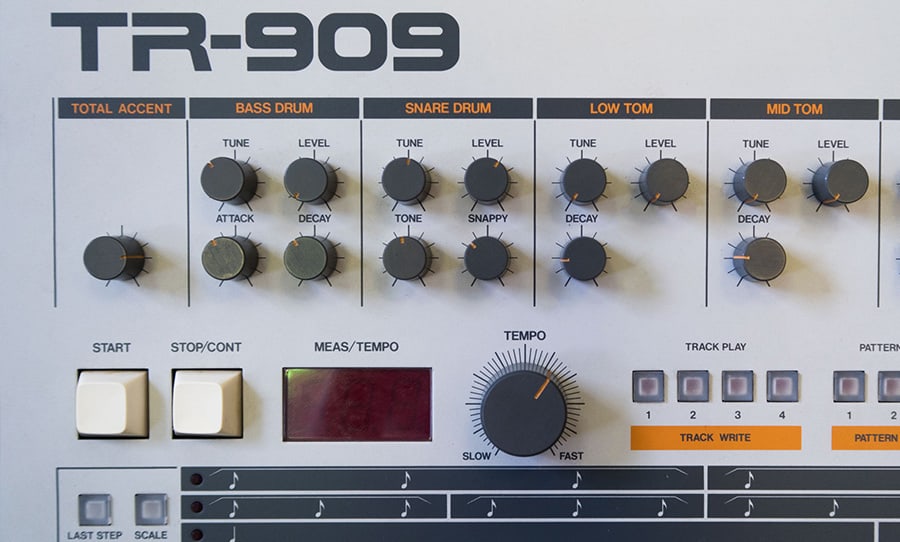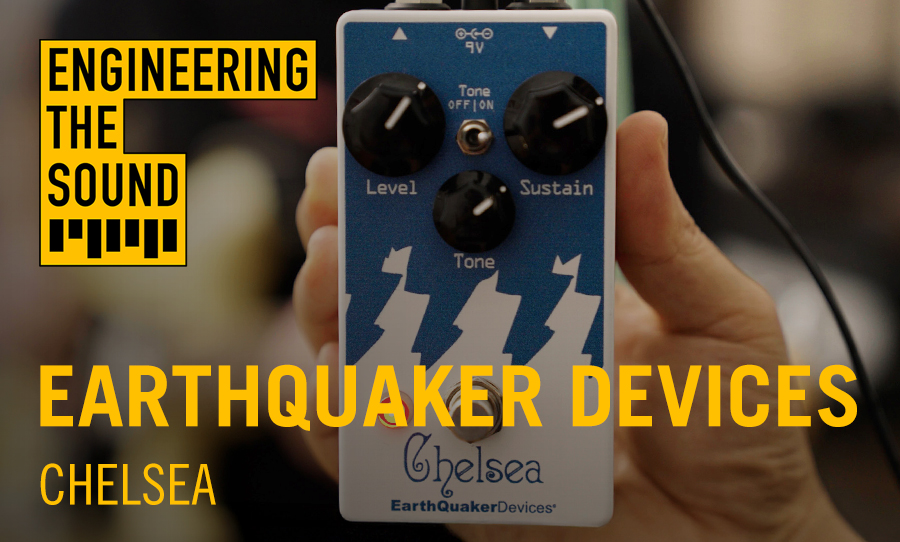From thunderous beats to pulsating synths, we take a look at 6 classic electronic instruments that shaped dance music and synth-pop.
For the burgeoning electronic producer, mobile apps are low-cost and low-commitment instruments for developing creativity. And thanks to technology being what it is, there’s a whole virtual world out there for portable music composition, from Propellerhead to Arturia to the digital innovations of renowned hardware companies themselves. But with all of that literally at one’s fingertips, it’s tempting to disregard the classic electronic instruments that once made popular music what it was.
The ‘70s and ‘80s—to state the obvious—were momentous periods for music. Disco took off in the mid-‘70s, and synth-pop not long after; house established itself in the early ‘80s and was soon followed by techno.
These movements were defined by hardware inventions designed to enrapture the masses—and if that’s what you’re also looking to do, then these are the tools up your alley. From dance-floor rhythms to synthesised polyphony, here is a look back at some of the classic electronic instruments that shaped dance and synth-pop.
Roland TR-909 (1983)
Roland’s TR-909 is to dance music what the 808 is to hip-hop. Released just three years after the 808, the 909 played a thunderous part in the rise of techno and acid house, due in part to its characteristically heavy analogue bass thump and 16-step sequencer that was perfectly tailored for 4/4 beats. It also made its mark as the first drum machine to include MIDI, and was capable of storing entire songs with multiple sections.
Last year the 909 underwent a chic update, which Roland unveiled on September 9 – also known as “909 Day” – as part of its new Boutique line. The TR-09 is basically a compact, portable version of the original, retaining the same panel layout and interface, and with the addition of four outputs for studio sessions.
Nowadays digital simulations of the 909 are a dime a dozen. Propellerhead and Pulse Code are just a couple releasing apps that purport to recapture Roland’s classic beats.
Akai MPC60 (1984)
While Akai’s first MPC60 model revolutionised hip-hop in the late ‘80s, the Music Production Controller (or MIDI Production Center) series is also worth a listen for house musicians on account of its impeccable rhythmic timing. Famous for its “MPC swing,” these drum machines have been calibrated to produce a convincing approximation of natural human imprecision, minus randomisation and delay in samples.
Creator Roger Linn also personally designed MPC models with natural drum pad dynamics and pressure-sensitive note repeat, carried over from his original Linn 9000 machine from 1984. The MPC 2000XL is a modernised version of his iconic design, with more sampling storage memory and a host of new features such as multi-track recording.
Although the iMPC Pro app is unmatched among software emulations, those willing to invest more into modernised hardware might want to get their hands on the MPC Studio. It’s sleek and slim-lined, includes all the original MPC sounds, and supports samples from every other model.
Roland TB-303 (1982)
Roland is an industry leader for many reasons, yet another being its legendary “Transistor Bass” synthesiser. First produced in 1982, the TB-303 was designed by Tadao Kikumoto—the man also behind the 909. The 303 initially appealed to guitarists, before enjoying a cosmic wave of popularity among Chicago DJs and electronic musicians in the late ‘80s. It grew to define house and acid, and was commonly featured later in techno and trance. Arguably its most notable feature is the accent circuitry allowing for emphasis of EG resonance, which is what’s responsible for the high ends distinctive “wow” character.
In 2014, Roland’s Aira series introduced a digital reinterpretation of the 303, known as the TB-3. They also unveiled a modernised TB-03 on “909 day” last year—another highlight of the Boutique line-up.
If you’re after a cheap mobile version, however, Pulse Code Inc. has delivered with an emulator app for just $2.99. Modelled on a vintage 303, the Digital Bass Line app is probably the closest imitation of that “wow” screech on the market today.
;
Yamaha TX81Z (1987)
This FM synthesiser made a name for itself predominantly on the merits of its timeless Lately Bass preset, which became ubiquitous in disco. It was also a favorite among such pop producers as Babyface and the Spice Girls’ Eliot Kennedy, who summed it up as a “classic dance-floor bass sound.” (Madonna’s Vogue is the go-to example of this.)
Thanks to its affordability, ranging from $200 to $300, the TX81Z continues to be popular among small-time house producers to this day.
The TX817 was also notable for being the first FM synth to offer multiple oscillator waveforms besides the typical sine wave—eight, to be exact, for all four oscillators per voice. All of that, in addition to the module’s popular 128 presets, made this synth one to be remembered.
Today a software emulation of the TX81Z is available from Primal Audio for $6.99. The “FM4” app, which retains the original’s eight waveforms, has proven to be a hit worldwide.
Sequential Circuits Prophet-5 (1978)
Arguably no other analogue synthesiser has been more influential than Sequential Circuits’ Prophet-5. Used by the likes of Duran Duran and the Eurythmics, the Prophet-5 was the leading polyphonic synth of the 70s/80s and paved the way for countless others. It was famed for its five-note polyphony, a landmark in those times—and even more celebrated than its Prophet-10 descendant.
The Prophet-5 came together with input from fellow synth pioneer E-Mu Systems, who designed its oscillators, filter, and amplifier chips. A distinctive “Poly-Mod” option allowed you to use one oscillator to modulate the frequency and pulse of the other oscillator’s width and filter. The effect of this was the iconic sync sweep used and abused by countless musicians.
Today the most relevant digital emulation is Arturia’s iProphet Synthesiser, which is actually based on the Prophet VS — Sequential’s first and only digital follow-up to the P-5. Arturia’s app is priced at $14.99 and is stocked with over 500 new presets.
ARP Odyssey (1972)
Produced as a competitor to the eminent Minimoog, the Odyssey grew to be ARP’s best-selling synthesiser and distinguished itself as one of the first duo-phonic synths ever made. It was versatile enough for acts ranging from ABBA to Air to Nine Inch Nails, and ideal for performance with a control panel for all parameters right at the front.
In 1981, ARP ceased manufacturing of the original Odyssey as a result of the digital takeover that was leaving analogue in its dust. Happily, Korg brought it back in 2015 under advisement from ARP co-founder David Friend. The spanking new Odyssey boasts a mass of new modern features, including improved noise-resistant outputs and an electrifying “drive” switch for distortion. Conveniently, it’s also combined the three different filter circuit options that came with each Odyssey update back in the ‘70s.
Korg also has graciously digitised the whole shebang for us in the form of the ODYSSEi app, priced at $30.99. Their very own Component Modelling Technology has been employed to recreate the Odyssey’s original analog sound.



